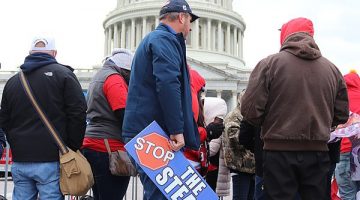Supreme Court Justice Clarence Thomas has called for the Supreme Court to revisit the decision made by the court in 1964 in New York Times v. Sullivan that clearly defines libel law and makes it more difficult for public figures to sue for libel. Thomas said the decision was made based on bad interpretation, and constitutional law does not protect the reputation of American citizens. While constitutional interpretation is another matter entirely, reversing the Sullivan decision would open hunting season on journalists and publications.
Without going into a whole First Amendment lecture, libel is the publication of false statements that are harmful to the reputation of an individual. When suing for libel law, the standard of proof is based on the determination of whether the person the statement is published about is a public figure or a private person. When the person is considered private, they have to prove the publisher acted with negligence — or even if they didn’t know the statement was false, it would’ve been easy to figure out and it caused damage within that person’s life.
However, if the person is a public figure, they have to prove actual malice — harder to prove than negligence, actual malice means the publisher knew the statements were false and acted with reckless disregard for the truth. The Sullivan case put these standards into practice and said public figures are subject to criticism by the public.
To Justice Thomas’s point of constitutional interpretation, the founding fathers wrote the constitution in defiance of English law forbidding criticism of public figures, especially the government. They wanted citizens to criticize leaders without fear of prosecution to ensure a healthy democracy. Allowing public figures to sue publications and individuals because they don’t like what is being said about them is inherently undemocratic. Reversing the Sullivan decision would remove the actual malice standard, making it easier for public figures to sue, and therefore limiting free speech in fear of retaliation.
Another important piece of protection to come out on the base of the Sullivan case is anti-SLAPP statutes. SLAPP — Strategic Lawsuit Against Public Participation — is a trend where people with money and power could threaten legal action in retaliation for what is published about them. This could cause publications and individuals to withdraw true statements or not publish them at all in fear of being sued, and potentially bankrupting the publication or person. This would set a precedent to not publish harmful, even if truthful, statements about public figures.
Anti-SLAPP statutes are determined by each state and protect publications and individuals from such retaliatory actions. In Nevada, an anti-SLAPP motion allows for the suit to be heard immediately in order to save the cost of legal protection and resolve the issue in order to determine if the lawsuit is justified, or just in retaliation to a published statement. These statutes are largely based on the Sullivan interpretation, and while states have the power to keep their anti-SLAPP statutes should Sullivan be overturned, they would not have legal precedent to base it off of.
The Sullivan case determined strong protection for journalists and publications against those who are more wealthy, powerful and able to restrain free speech due to the threat of legal action. The decision must remain intact if our democracy should continue to thrive and the value of free speech remains strong in this country. While this issue largely affects journalists and the media, it also restrains every American’s constitutional right to the First Amendment.
The Editorial Board can be reached at mpurdue@sagebrush.unr.edu and on Twitter @NevadaSagebrush.












